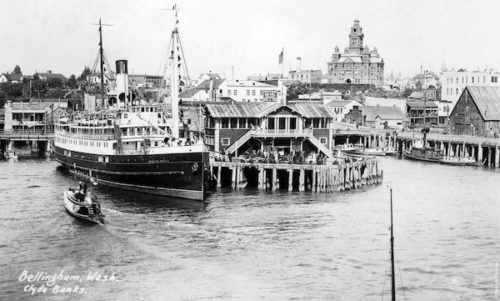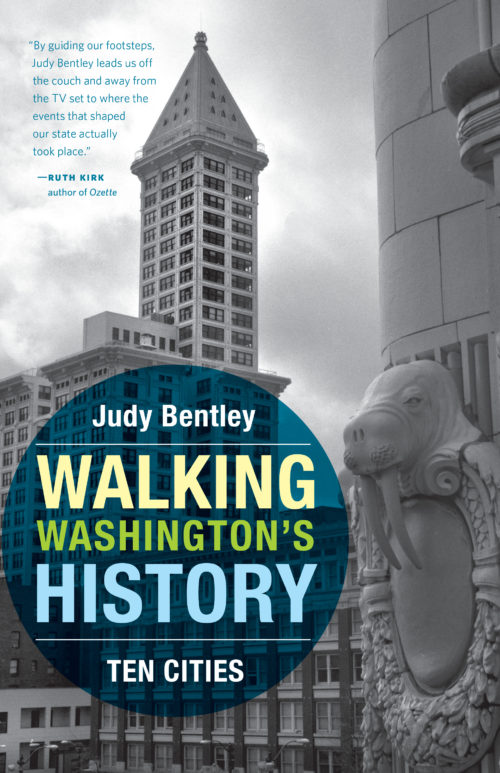Walking Washington's History

Four villages — Whatcom, Sehome, Bellingham, and Fairhaven — grew along the waterfront of Bellingham Bay and rode every boom and bust that swept the Pacific Northwest in the late 1800s and early 1900s. Whatcom surged on sawmills and a gold rush; Sehome boomed on a coal mine and railroad hopes. They merged in 1891 to become New Whatcom. The next village south on the bay, Bellingham, had a brief fling with coal but was swallowed up by Fairhaven to the south, which had visions of railroads and ended up with canneries. In sequence, they inhaled opportunity, exhaled optimism, and built long docks into the bay.
Bellingham is one of 10 Washington cities that Bentley provides brief but engaging historical overviews for, along with walking routes that explore our region’s past on foot (or bicycle). Seattle, Olympia, Walla Walla, Everett, and Yakima are other destinations that Bentley—who also wrote the bestselling Hiking Washington’s History—explores and interprets for her readers.
Each tour is a loop from two to seven miles long, with each city chosen to represent a distinct chapter in the post-European settling and development of the Evergreen State: Vancouver as the earliest significant settlement in the Pacific Northwest, Port Townsend as an important port of call for sailing ships in the mid-1800s, Spokane symbolic of urban renewal and reinvention efforts of the 1970s, and so forth.

Bellingham, in a chapter subtitled “Reluctant City,” is symbolic of the many frenzied waves of resource extraction that created booms and busts throughout our region: coal, gold, timber and salmon.
The walking route begins at the totem “story pole” in front of the Whatcom County Courthouse depicting settlers Henry Roeder and Russell Peabody in a canoe with Lummi tribal leaders Ts-likw and Cha-wit-zit. It then crosses Pickett Bridge, taking in Whatcom Falls before strolling the Old Village Trail up Peabody Hill to the Pickett House—the oldest wooden building in Washington state still on its foundation. This short section of the walk proffers tales of early U.S. Army presence in the Washington Territory, sawmills and timber economics, a utopian commune from Kansas and relations with the local tribes.

The history tour continues through downtown, follows the waterfront to Fairhaven, then circles up South Hill, winding around the Western Washington University campus before bringing the sojourner back to the courthouse. Along with directions and a map, Bentley interprets what you are seeing all along the way, and why it matters in the century-and-a-half story of Bellingham’s development.
Did you know the City of Subdued Excitement has the first and oldest brick building in Washington state? Do you know why downtown has so many odd triangle intersections? Interested in knowing how Railroad Avenue got its name, where the Sehome coal mine was or the story behind the Big Tin Rock between the shoreline and the Boulevard over-water walkway? Curious about which city park was designed by the famous Olmsted Brothers and which library was funded by steel magnate Andrew Carnegie?
As Bellingham continues to transform itself again, it is wise to remember where we’ve come from. There are stories in the ground beneath our feet, dashed dreams lingering in the air, as well as legacies of benevolent forethought from a not-so-distant past all around us.
Top photo: “The Princess Sophia at Citizens’ Dock, 1914.” Photo by Clyde Banks, courtesy Whatcom Museum. Originally published in the Cascadia Weekly June 2016.

